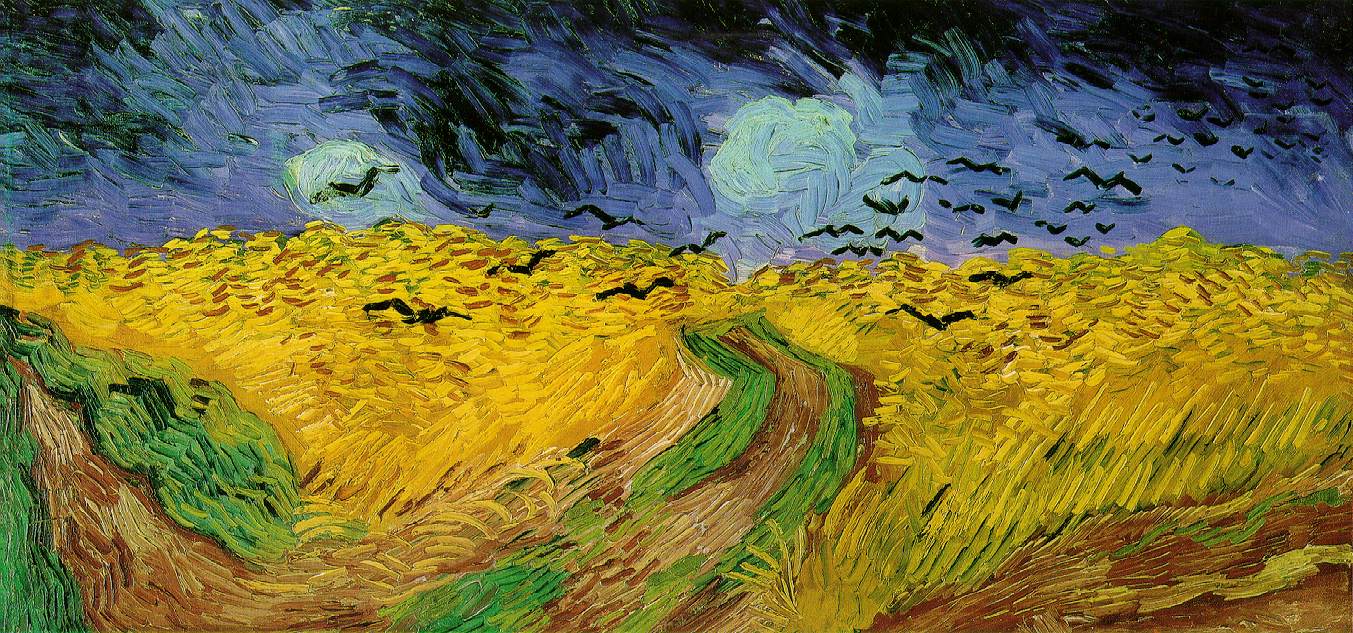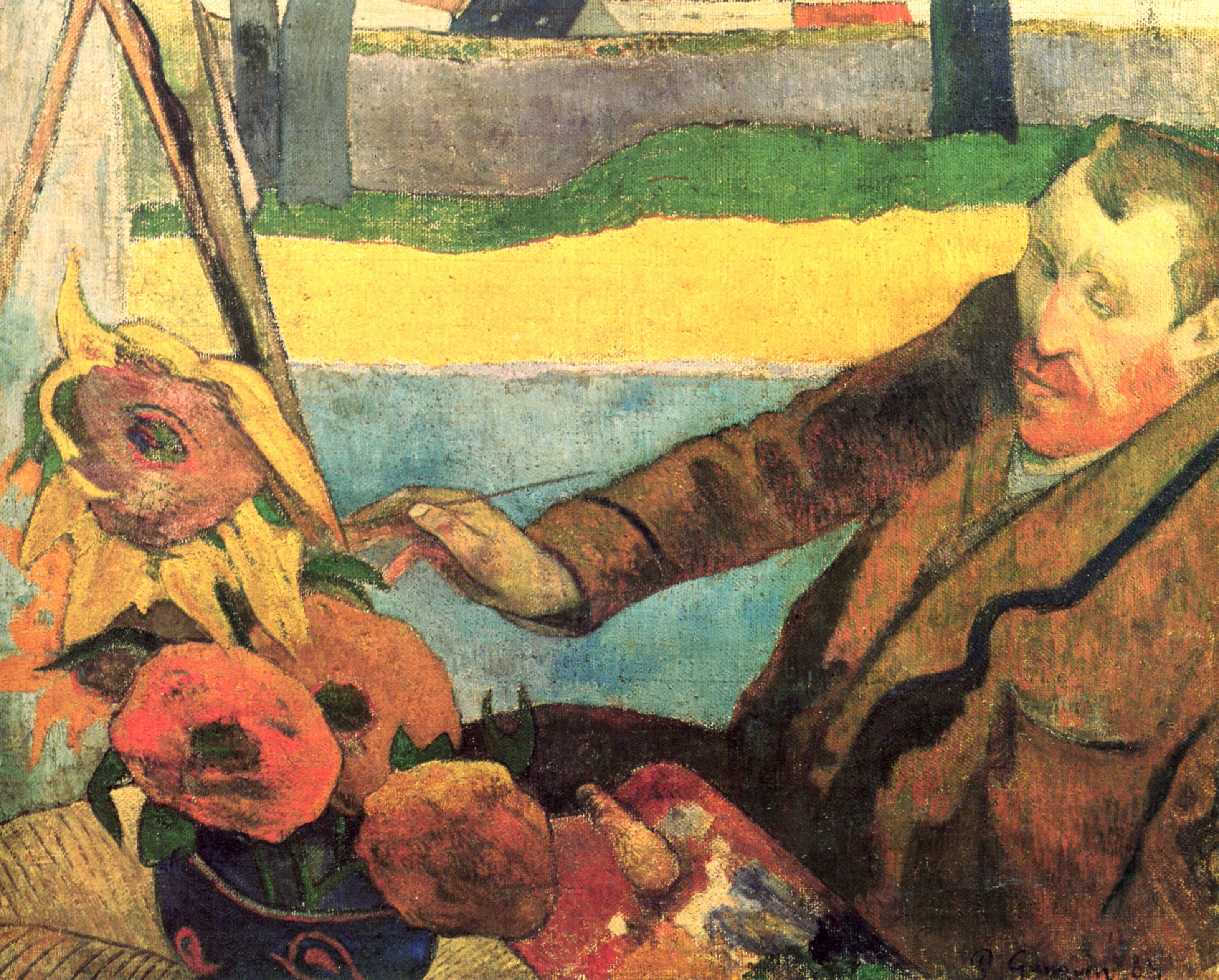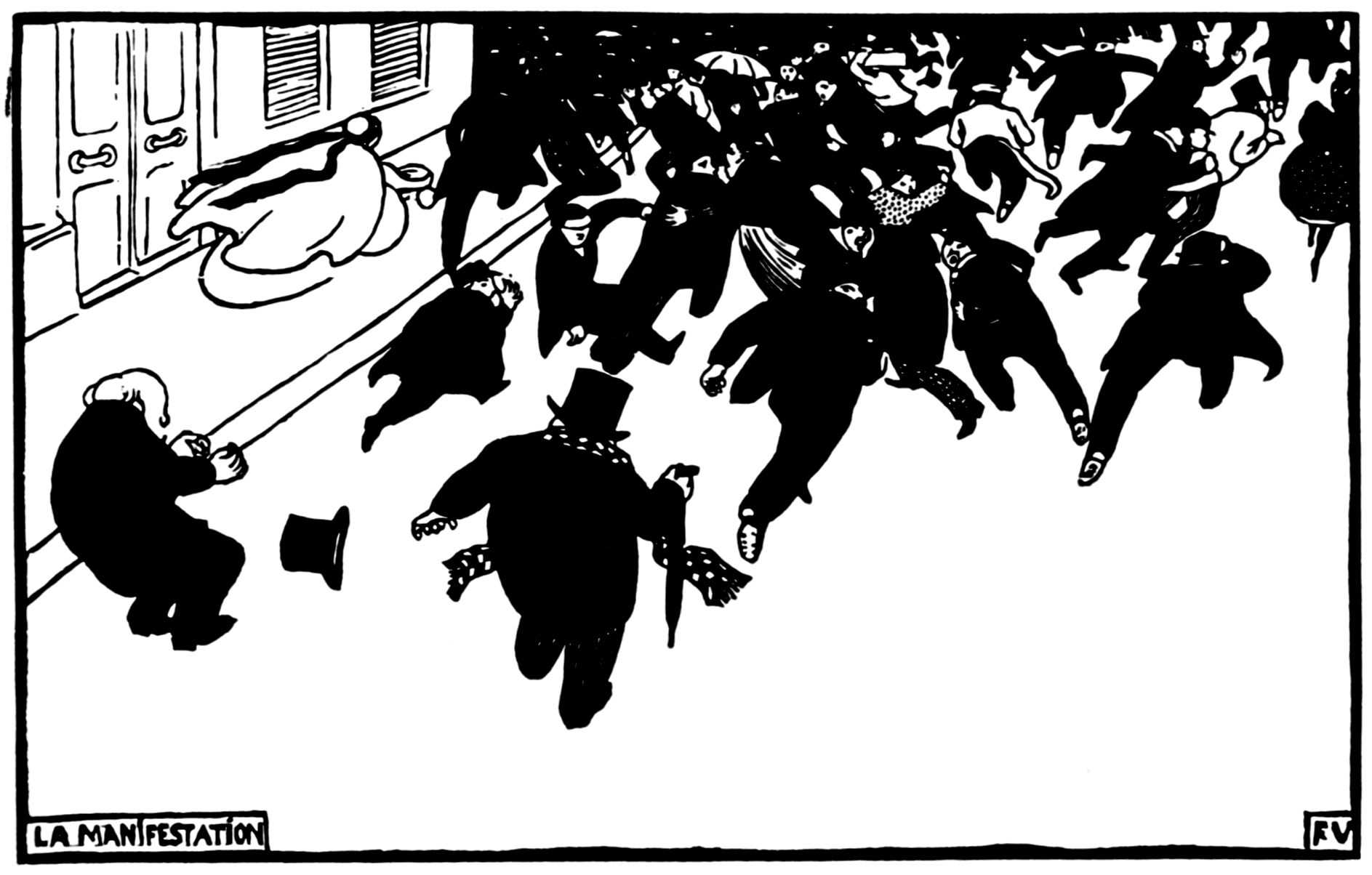We were conveyed to the Netherlands by a Megabus from Edinburgh, with
a change-over in London. The administration of the ride was a mess.
Somehow, the Megabus passengers to London were separated into two
different busses (neither was full to capacity), one of which (ours)
made stops in Newcastle and Leeds, which I'm not sure it was supposed
to. The drivers had disputes with bus station officials. No one seemed
to know where the passengers were supposed to get off. There was no
water or toilet paper in the bus. We were very late to London, but they
held the London-Amsterdam bus for the Edinburgh connecting passengers.
I had hoped to sleep once we switched busses in London, but we had to
all get out of the bus for the ferry ride, which was fully lit, loud,
and had nowhere to lie down. I slept a little on the ferry and the bus
afterwards, but probably only a couple hours.
On the ride, I read
How Can You Defend Those People?, an account of
James Kunen's time as a public defender in Washington, D.C. James Kunen, strangely, is the author of
The Strawberry Statement,
an influential first-hand report on the late-'60s student occupation of
Columbia University. It seemed like an appropriate follow-up to Sergio
de la Pava's
A Naked Singularity, which is also about public
defenders. Actually, de la Pava does a better job of answering the
titular question of Kunen's book than Kunen does, but I liked
How Can You Defend Those People? anyway.
We couldn't get any Couch
Surfers to host us in Amsterdam. It's a bad sign, since we're relying
on it for much of our time in Europe. Amsterdam hosts are inundated
with requests at this time of year; I'm hoping other cities will be a
little less crowded, and easier to find a host in. We booked the
cheapest available hostel, near the Oosterpark, south-east of the city
center.
The first thing we noticed about
Amsterdam was the bikes. I had heard Amsterdam was a "bike-friendly
city," in the way people say that Minneapolis or Portland, for example,
are "bike-friendly cities" because of their bike lanes, navigable
layouts, and large number of bike commuters (in Portland, the number one
city in the United States for bike commuting,
almost 6% of workers travel by bike). The difference is that in Amsterdam, bikes represent the
majority
of city traffic. The bikes are predominantly the sturdy, heavy,
classic Dutch cruiser style, which make sense in a city as flat as
Amsterdam. There are more bikes than cars. On the small streets, cars
share the road; on larger through-ways, there are wide bike lanes,
separated from the road and the sidewalk by curbs. Amsterdam should be a
model to U.S. cities seeking to improve their bicycle infrastructure.
 |
| The parking garage in the background is also packed with bikes. How do people manage to find their own bikes in this mess? |
 |
| The Dutch also like comically tiny cars |
After
the bikes, the second and third things we noticed about Amsterdam were
the heat and the trash. It was probably 30 degrees hotter in Amsterdam
than when we got on the bus in Edinburgh. Also, for as beautiful a city
as Amsterdam is, it's downright filthy. The canals are dirty, almost
every trash can is overflowing, and the parks are full of plastic bags,
takeout containers, bottles and cans, and cigarette cartons. It's
possible that Amsterdam's infrastructure is ordinarily better equipped
to deal with garbage, and is just temporarily overwhelmed in the height
of tourist season. Whatever the reason, the trash tarnished the city's
charm somewhat.
But what charm it has.
The famous houseboats were fantastic:
 |
| Also, there was this guy |
We visited both the very beautiful
Rijksmuseum and the
Van Gogh Museum. The Rijksmuseum has been under construction for a decade or something, but most of the
hits are on display.
 |
| The corrugated-metal storage container really contributes to the majesty of the place |
The collection is fairly small - all Dutch
artists, with Rembrant prominently featured. There are also a number of
Vermeers. Rembrandt is cool and everything, good grasp of light and
color, etc.,
but Vermeer has something that sets his work apart from his peers in a
way that's hard to describe. I'm too much of a boor to appreciate still
lifes and portraiture, for the most part, which constituted a lot of
the Rijksmuseum collection, but I do like Vermeer.
 |
| River View by Moonlight, Aert Van der Neer |
 |
| Still Life with Turkey Pie, Pieter Claesz |
 |
| The Threatened Swan, Jan Asselijn |
 |
| The Night Watch, Rembrandt |
 |
| Portrait of Gerard Bicker, Bartholomeus van der Helst |
 |
| View of Houses in Delft, Vermeer |
 |
| The Milkmaid, Vermeer |
Some of my favorite things from the collection were the 16th-18th century Dutch furniture and earthenware.
 |
| This is probably the cruelest cabinet in existence: tortoise-shell inlaid with ivory |
I was daunted by the line outside the Van Gogh Museum, but I'm glad I stuck with it. The queue moved quickly, and inside was some of the best art I've ever seen. Obviously, there were a huge number of Van Gogh's works from all periods of his
oeuvre.
It's arranged chronologically, beginning with his first sketches and
early still-lifes, through his brown-and-black peasant studies, to his
colorful and loose Arles paintings, and ending with his spiral into
near-abstraction in the years before his suicide. Unfortunately, there
were no photos allowed. None of the
following pictures are mine:
 |
| Room at Arles, Van Gogh |
 |
| Wheatfield with Crows, Van Gogh |
 |
| Skull of a Skeleton with Burning Cigarette, Van Gogh |
 |
| Tree Roots and Trunks, Van Gogh (possibly his final painting) |
As
fantastic as that was, I was even more pleased by the museum's
galleries of Van Gogh's contemporaries and followers. I've seen a few
Impressionism exhibits before, and it always strikes me that they
feature a lot of the artists from that movement that I like least (Mary Cassatt). This collection was all killer, no filler, and
introduced me to some artists I hadn't seen much of before and really
liked, such as Émile Bernard, Charles Laval, Alexej von Jawlensky, and
Leo Gestel (although their paintings from the Van Gogh Museum collection
aren't available in good quality on Google Image Search).
 |
| Portrait of Vincent Van Gogh Painting, Gauguin |
 |
| Portrait of Guus Preitinger, the Artist's Wife, Kees van Dongen |
 |
| Breton Girl Spinning, Gauguin |
 |
| La Recolte des Foins, Éragny, Pissarro |
There was also a stupendous exhibit of
fin de siècle prints
by artists such as Édouard Vuillard, Henri de Toulouse-Lautrec, Pierre
Bonnard, Félix Vallotton (my new favorite artist), and Jean-Émile Laboureur. Once again, some of the best weren't available online:
 |
| Trottoir-Roulant, Vallotton |
 |
| La Manifestation, Vallotton |
 |
| La Petite Blanchisseuse, Bonnard |
 |
| Saint-Tropez II, Signac |
 |
| Tiger in the Jungle, Paul Ranson |
Although the Van Gogh Museum contained a lot of excellent material, it's pretty small. We only spent a few hours there.
We did pass through the Red Light District, almost reluctantly. At our hostel, we met another American, Ryan, who's studying in London
and had just arrived in Amsterdam a few hours before, and the three of us went to see what it was about. It was sort of interesting, but
less than I expected. Perhaps it's because the
prostitution seems so un-seedy, safe, and efficient. The girls, at
least the ones in the windows, are suprisingly pretty and don't seem desperate, although this is probably an illusion - most of the prostitutes are foreigners without much education, often trafficked in from Eastern Europe by unscrupulous pseudo-pimps. Most people in
the neighborhood were tourists, like us, there out of curiosity, or to
buy marijuana and overpriced beer. The seedy aspects were much the same
as the ones you'd expect from a large college campus on a Saturday
night. There were bros, or the European equivalent thereof, as
far as the eye could see. We passed through one alleyway where an
obviously beleaguered resident had put up signs imploring (in English,
Dutch, and via illustrations) passers-by not to urinate, vomit, or shit
on their doorstep. That there must have been enough bodily fluid incidents in this single alleyway to necessitate
multi-lingual signage is a testament to how mind-bogglingly awful the
Red Light District is.
 |
| Ryan and me in the Red Light District |
On Monday, we picked up bread and a tomato tapenade for a picnic brunch
on our way to rent bikes. I wish we hadn't pushed the bike rental back
to our last full day in Amsterdam, because it was a total joy, and an
excellent way to get around the city (the drawback is that it costs
something like 15 euros for 24 hours, or 9 euros for 3 hours - ouch).
We biked through the famous Jordaan neighborhood, filled with
17th-century row houses converted to galleries, coffee shops, and
antique stores. We ate in a green space next to a house-boat.
We
biked past a couple of squats on Spuistraat, covered in graffiti and
slogans.
I felt somewhat melancholy. The Netherlands are the Mecca of
squatting. Until 2010, it was essentially
legal to occupy abandoned buildings.
Squatting is something I've always been interested in, at least in principle. I don't have a very friendly relationship with the capitalist economy: I did everything I was supposed to to appease it, and yet it seems intent on burying me. Squatting offers an out from the tyranny of the paycheck, and so I like it. It also makes simple sense: there are thousands of buildings that
municipal governments have possessed for non-payment of taxes standing
empty in the U.S., deteriorating until the city sees fit to use your tax
dollars to demolish them. I am a person who wants to occupy and
improve these buildings. This seems eminently reasonable, and yet the
law holds that this a crime. I'm digressing: the point is that a few years
ago, I would have been really excited to see Amsterdam's squats, but
now, I hadn't even thought about it and would've missed them entirely,
had my touristy bike route not accidentally led me past them. I would
love to meet some squatters and gain some knowledge about the practical
aspects of squatting, but I don't even know where to begin to do that.
I'm not politically radical enough, for one thing, and I feel like I've
become so comfortable in my role as a young urban working guy (or
whatever) that I would seem disconnected and soft to squatters. I now
feel like I'll always be an outsider to that scene, and that's sort of a
sad thing to come to grips with. It's a strange feeling to have a
dream die, not because you're no longer interested, but because you
recognize the reality that you can't be the kind of person who can make
that dream happen, the kind of person you thought you were.
Our biking route was haphazard, but that was the idea from the start. We returned the bikes and walked to the
Jewish Historical Museum,
which is housed in a former synagogue. In the basement was a
collection of Jewish artifacts ranging from 17th century Torah finials
to 1920s art deco seder plates.
 |
| Circumcision toolbox |
 |
| Modern clock |
 |
| Seder plate. The thing on the right is a light to aid in the ritual of searching out your last crumbs of chametz before Passover |
Ascending to the ground level and second story, the museum presented a
history of Dutch Judaism. Unexpectedly, three Marc Chagall paintings were on
temporary loan from some or another foundation, shoehorned into a
section of hallway near the old synagogue's
mikveh.
The most interesting part of the museum was a multimedia installation by
William Kentridge,
Black Box. Kentridge is a white South African Jewish artist whose work is highly political, as that complex ancestry might imply.
Black Box is a commentary on the
genocide
committed by German colonial forces against the rebelling Herero and
Namaqua peoples of Namibia. The work consists of mechanized figures
moving over a projected backdrop of Kentridge's animated charcoal drawings and historical
documents from the colonial period, set to Namibian music. The stated concept of the work was
to examine how Enlightenment ideals of human equality were twisted to
promote genocide and colonial brutality. The ties between colonial
genocide and the Holocaust were obvious, and some of the themes of
collective memory, mourning, and guilt in
Black Box would seem
likely to resonate with the Dutch Jewish community, which was decimated in the
concentration camps. It was a very moving and dark piece of art, and I was
grateful that we came to Amsterdam while it was on display. Some of the charcoal drawings Kentridge incorporated into
Black Box were hung near the installation theater:
Caving to touristy pressure, we bought tickets for a canal tour. People are constantly moving through the canals of
Amsterdam by boat, and they all look like they're having fun, with their
picnic lunches and their wine. I wanted a piece of that fun. And it actually was pretty fun, although less romantic and dreamy, more crowded and
pedagogical. We saw some new parts of the city and got to peek into
the windows of swanky 17th-century houses, a favorite activity of mine.
Amsterdam looks great by boat.






Our experiences with food in Amsterdam were hit-or-miss. The first night, after seeing the Rijksmuseum, we wandered through a dense commercial district with tons of restaurants, all expensive. We settled on a Thai place, which seemed a little cheaper than the rest. We should have left when they refused to serve tap water, trying to get us to cough up 3 euros for a bottle of water or 4 for a pot of tea (!!!), but
instead we stayed and got smacked with an unexpected charge for rice (2.50 euros per bowl, or something similarly ridiculous).
The service was terrible and the food was just okay, and we ended up
feeling pretty miserable about how much money we shelled out for a shitty
meal.
One of the things I'd gotten really excited about in Amsterdam was the number of Surinamese restaurants.
Suriname
is a small South American country, formerly a Dutch colony. Its
unusual demographics arose from overseas workers brought in to work the
valuable plantations and mines in Suriname. Originally, these workers
were African slaves, until the slave trade was abolished in the 1860s
(incidentally, many of these slaves escaped to the jungles of Suriname,
where they developed independent and unique tribal societies and waged
war on the plantations. Plantation owners were forced to make recognize
the rebel slaves' independence and pay them tribute); at this point, the Dutch began importing Javanese and Chinese workers from the Dutch East Indies (now part of Indonesia) and Hindus from the Indian subcontinent. Surinamese cuisine is a
mixture of all of these culinary traditions. Menu items might include
Indonesian
nasi goreng and
gado gado, tempeh sandwiches, Indian
roti with cassava, chop suey, Creole chicken and bean stew, and fried
plantains. Because Surinamese food has such an expansive scope, many
Surinamese restaurants in Amsterdam focus on a particular approach - for
example, Indian- or Javanese-Surinamese. I chose to eat at Kam Yin, a
Chinese/Surinamese place in Amsterdam's Chinatown, abutting the Red
Light District. The food was cheap and delicious.
 |
| This roti was beyond belief |
It's hard to see a city in three days, even though I think we used our time well. I'm sure we're going to feel this way about everywhere we go in Europe. I'm really sorry we missed the
world's oldest botanical gardens and the
Tropical Museum, both of which look awesome.
 |
| Hortus Botanicus Amsterdam |
 |
| Tropenmuseum |
I'd also like to see the Dapper Market, a large open-air pedestrian bazaar where goods ranging from fresh fruit to bike parts are sold out of tents and carts, and the food vendors are supposed to be great. We walked through the Dapper Market area in the evening, after the market had closed up. It's primarily an African and South American neighborhood, with many shops catering to the Netherlands' immigrant communities.
On Tuesday, we were up and checked out of our hostel early, and walked with
our packs to the natural foods market, in preparation for the day of
travel which would take us to our first WWOOFing farm in the
Noordoostpolder, where I am presently writing. There's a lot to say
about our experiences at the farm, which will have to wait for another
day.
Without much context for comparison, I find it hard to judge Amsterdam's
merits relative to other European cities. Certainly, it conforms more
to the American idea of Europe than Reykjavik or Edinburgh, but that's
unsurprising. There were things I liked and things I didn't (bros,
mostly), and many things that struck me as unique that probably aren't,
and maybe I should hold final judgment until I've become inured to the
novelty of pre-18th-century architecture and funny accents.








































































